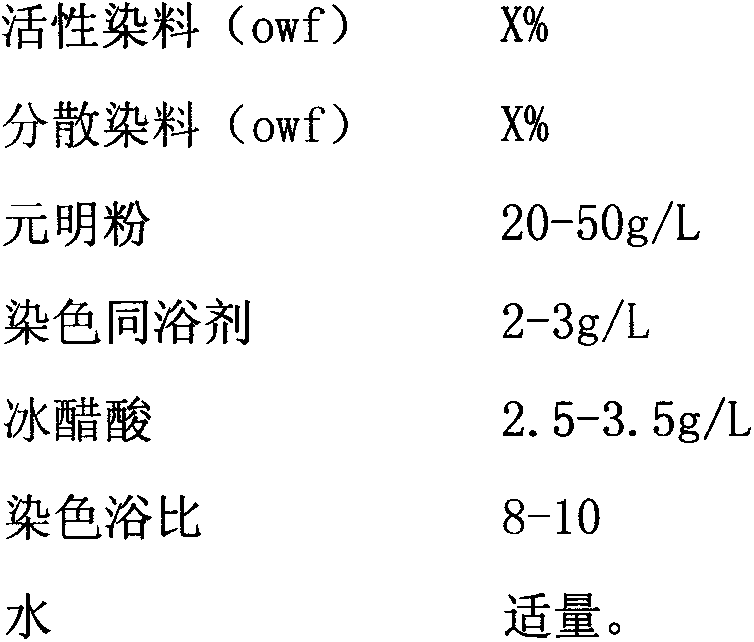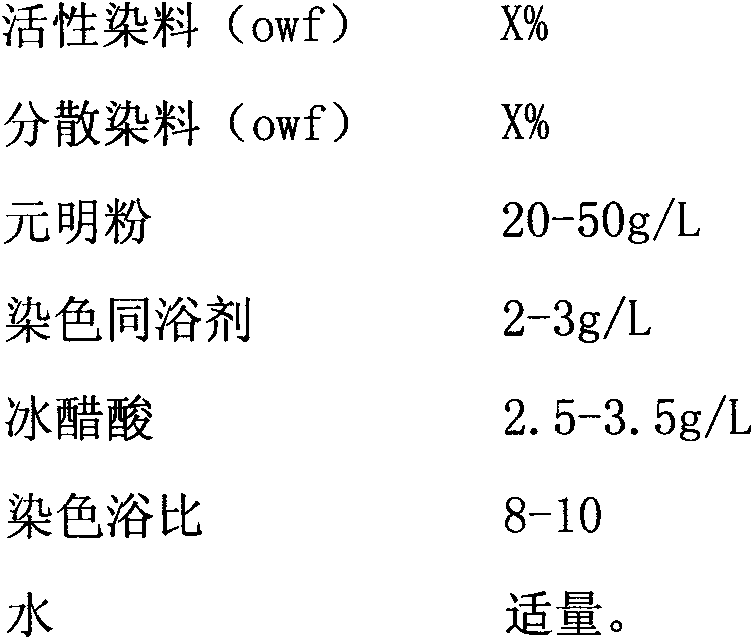One-bath agent for reactive dye and disperse dye used in dyeing
A technology of reactive dyes and disperse dyes, applied in the field of textile printing, can solve the problems of affecting output and production cost, high production cost, heavy sewage treatment load, etc., and achieve the benefits of environmental protection, water saving, energy and water reduction The effect of consumption
- Summary
- Abstract
- Description
- Claims
- Application Information
AI Technical Summary
Problems solved by technology
Method used
Image
Examples
Embodiment Construction
[0017] The fabric is dyed according to the following process: the first step, first add the fabric (T / R or anodized cloth) and an appropriate amount of water into the dyeing vat; Dyeing bath agent and reactive dye (keep for a period of time), of which the main components of dyeing bath agent are reactive dye protective agent, fixing alkali agent, surfactant, preservative, pectinase, cellulase, of which dyeing bath agent It consists of 50-60% by weight, 35-45% cellulase, 3-8% surfactant, 2-3% reactive dye protection agent, 1-2% fixing alkali agent, 1-2% preservative 2%, then heat up for 30-40 minutes to 60°C, keep warm for 30-40 minutes to dye with reactive dyes, then add glacial acetic acid to neutralize when the temperature rises to 80°C for 20 minutes, keep warm for 15 minutes, and add disperse dyes. The alkali resistance of disperse dyes is poor, and disperse dyes need to be added after reactive dyeing (and acetic acid is added to neutralize), then the temperature is raised...
PUM
 Login to View More
Login to View More Abstract
Description
Claims
Application Information
 Login to View More
Login to View More - R&D
- Intellectual Property
- Life Sciences
- Materials
- Tech Scout
- Unparalleled Data Quality
- Higher Quality Content
- 60% Fewer Hallucinations
Browse by: Latest US Patents, China's latest patents, Technical Efficacy Thesaurus, Application Domain, Technology Topic, Popular Technical Reports.
© 2025 PatSnap. All rights reserved.Legal|Privacy policy|Modern Slavery Act Transparency Statement|Sitemap|About US| Contact US: help@patsnap.com


